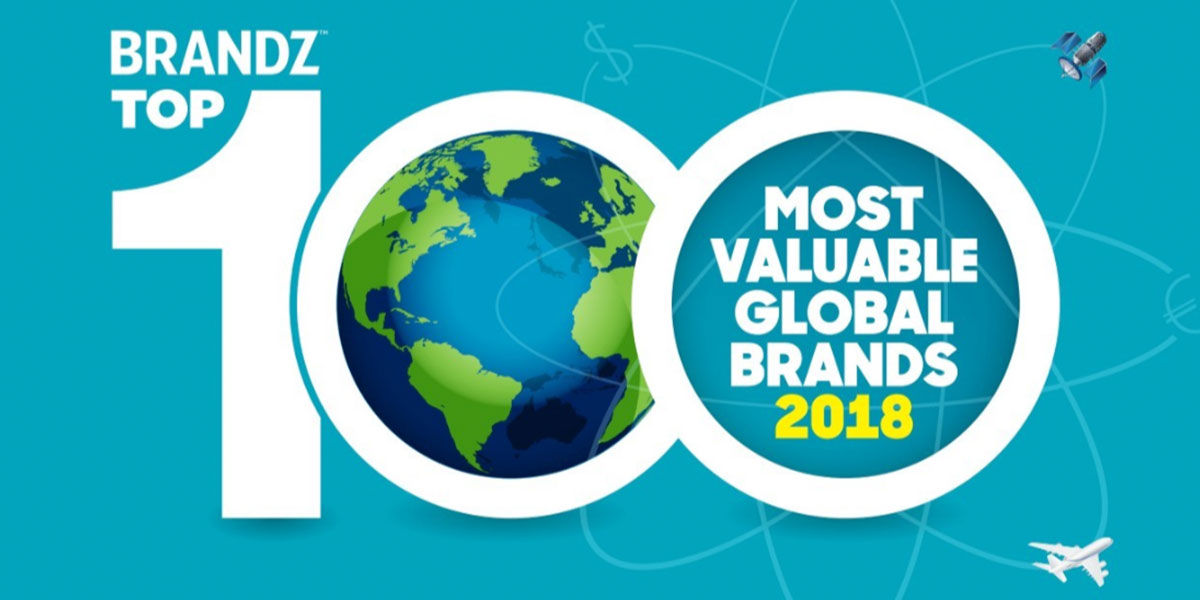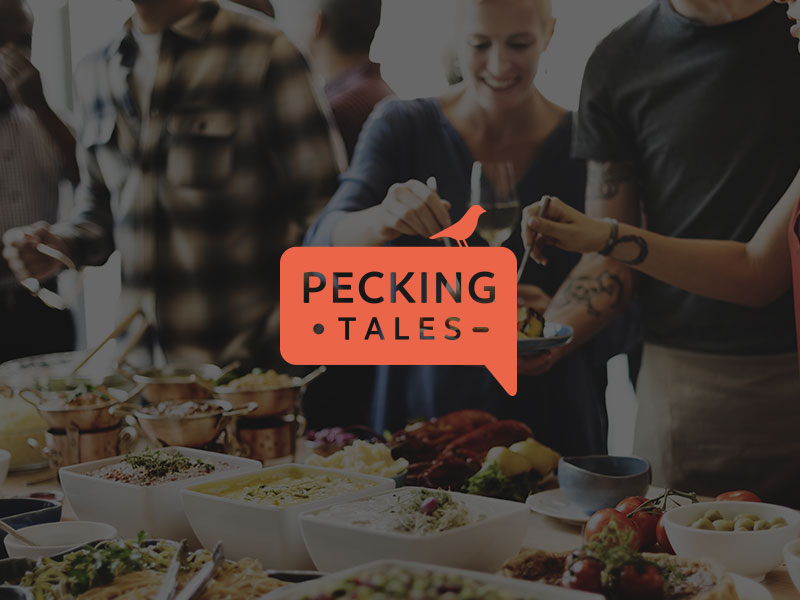Spellbrand Blog
How To Stand Out From The Competition

The marketplace is crowded. It’s noisy. For every great product out there, there’s a competitor waiting in the wings to take a bite of hotly contested market share.
So how do you, as an emerging brand, differentiate yourself? The advent of the Internet and social media means it’s no longer enough to have the best product. It’s not enough to have the most competitive pricing, either. That alone won’t save you.
In the modern shopping landscape, you have to connect to the consumer on a deeper level.
In this guide, we’ll cover a few broad approaches that, when taken together, can help you stand out from the crowd.
Let’s get started.

How to Differentiate Your Brand
It’s no wonder brands are finding it more difficult to differentiate themselves. After all, consumers now have access to more information than ever before. Yet it’s in this hyper-competitive environment that today’s mega brands are forged.
To get from where you are to where you want to be—to become one of those new household names, you have to differentiate yourself.
Indeed, according to 2018, Top 100 Global Brands, a report from the Millward Brown which tracks and ranks successful brands each year, the ability for a brand to differentiate itself is crucial.
Historically, the top 50 brands have received significant—greater than 130—differentiation scores.
Differentiating yourself from your competitors allows you to make a profit in the short term, and it ensures that you remain relevant in the long-term.
When consumers see brands as interchangeable, the number of factors they look at when making a purchase decision shrinks. Primarily, they become concerned with price.
This greatly inhibits your ability to command premium pricing.
What’s more, consumers are much less loyal to brands they feel are poorly differentiated. This doesn’t occur on a conscious level for the most part—it’s a subconscious bias, which makes it much more powerful.
With all this in mind, let’s look at how you can successfully differentiate your brand.
5 Ways to Set Yourself Apart
#1 Start With Who You Are
When differentiating your brand, go back to your brand story.
What does your brand stand for? Looking at your story, what values stand out? What are you trying to achieve?
 The power of the Red Bull brand doesn’t come from the product’s ability to keep people awake. No, that would be a rather simplistic take on it. Its power stems from a certain quality that it promotes—a certain vitality.
The power of the Red Bull brand doesn’t come from the product’s ability to keep people awake. No, that would be a rather simplistic take on it. Its power stems from a certain quality that it promotes—a certain vitality.
When people purchase Red Bull, as opposed to a more generic energy drink, they’re making a statement.
The idea of vitality is woven into everything Red Bull does. Just look at their advertising. Look at their company culture.
In 2016, over 6-billion cans of Red Bull were sold worldwide, in over 171 countries. This despite the popular opinion that Red Bull is overpriced.
These days, brand identity isn’t just about the benefit the product provides to the consumer. It’s about the story.
So if your brand doesn’t stand out from the crowd, it’s time to ask the hard questions. What is it about your outfit that makes it special? How can you start building a unique culture today?
#2 Build Relationships with Quality Content
More on this in the last section, but for now, know that to build an awakened brand that will be both admired and remembered, you must foster relationships. This takes work and dedication.
Remember, the individual transaction may be what pays the bills, but the relationship is what keeps customers coming back.
Today, it’s easier than ever before to connect with your customers on a meaningful level. You can work to become an influencer in your niche, for instance, by consistently publishing a blog or producing a podcast. Or you could create a helpful YouTube channel. Whichever touchpoints you build, just make sure to engage consistently.
This means replying to all comments, especially those asking for clarification about your product or service value, and it means producing content that’s about more than your product itself.
Today’s consumers have no problem spotting marketing disguising itself as content, and they resent it.
 When creating content, or, for that matter, new partnerships with other companies, remember to stay true to your brand. Be genuine. For instance, it makes sense for Uber to partner with Hilton and to produce content centered on this partnership. What’s the common factor here? The consumer, of course.
When creating content, or, for that matter, new partnerships with other companies, remember to stay true to your brand. Be genuine. For instance, it makes sense for Uber to partner with Hilton and to produce content centered on this partnership. What’s the common factor here? The consumer, of course.
Uber helps the customer to get to the hotel, and the hotel makes the customer comfortable. Makes sense, right?
Uber is differentiating itself from its competitors by striking deals with synergistic companies. This conveys the message that they want to make the consumer’s life easier. Any content the company creates that highlights this partnership would convey this message.
However, what you don’t want to do is jump on the meme bandwagon. Memes come and go, and creating content meant to ride on their momentum can backfire. Worse, it makes you look generic and unfocused.
#3 Build Quality Customer Experiences
Instead of thinking solely about the ideal customer experience, think in terms of the best brand experience. Customers are attracted to unique brands because they’re different. Embracing this thought process from the start allows you to build the customer experience that best jives with your brand.
 Cracker Barrel is a casual dining chain that differentiates itself by focusing on offering a uniquely American experience. For instance, wherever possible, the stores are decorated with authentic antiques, relics of America’s past. Many of the chain’s customers get a kick out of its old-timey decor.
Cracker Barrel is a casual dining chain that differentiates itself by focusing on offering a uniquely American experience. For instance, wherever possible, the stores are decorated with authentic antiques, relics of America’s past. Many of the chain’s customers get a kick out of its old-timey decor.
Five Guys and Fries is a fast food chain that sets itself apart by offering fresh, never frozen beef and up to 15 toppings you can mix and match in any way you want. The complimentary roasted peanuts available for on-site consumption don’t hurt either.
You see, building a unique brand is all about building a culture. It’s not something you can do overnight, but you can get started right now.
#4 Get Personal
People want to be treated like people, not like demographic data on a chart. With today’s technology, it’s easier than ever to give them what they want in this regard. Increase the intelligence quotient of your marketing by moving toward personalized offers and experiences that make consumers feel recognized and valued.
Millennials, in particular, are adept at spotting low effort marketing and will avoid it.
 One way to get personal is to compile information about your clients over time so that you can offer personalized suggestions. Amazon, Target, eBay and many online and brick and motor outlets do this, but know that it can backfire pretty spectacularly. There is a certain amount of pushback against this practice from consumers, to say the least.
One way to get personal is to compile information about your clients over time so that you can offer personalized suggestions. Amazon, Target, eBay and many online and brick and motor outlets do this, but know that it can backfire pretty spectacularly. There is a certain amount of pushback against this practice from consumers, to say the least.
Perhaps a better example of ‘getting personal’ is Coca-Cola’s “Share a Coke” campaign. This campaign, which premiered in 2014, featured cans that sported popular first names, one per can. The idea was that when consumers saw a can that featured a friend’s name, they might be more likely to buy it for them.
The campaign was a success.
#5 Always Seek Growth
Following the crowd can be a safe bet in the short-term, but in the long-run, it can stifle growth. Worse, it makes you forgettable. Part of following the crowd is buying into short-term fads. Instead, focus on long-term growth drivers that will differentiate yourself from your competitors.
On the other hand, you don’t want to be afraid to try something new, either. Always staying in your lane means you’ll run into fewer opportunities for growth. Thinking back to your brand’s story, what new markets and industries can you move into that are in line with your values? How can you add value to those areas?
Remember, differentiation is a long-term objective, and it will require flexibility and boldness on your part.

What to Do In a Congested Marketplace
What else can you do right now to set yourself apart? Are there any concrete tactics you can employ to see immediate results? Yep, there sure are. Let’s take a look.
#1 Don’t Be Afraid of Alternative Pricing
One of the quickest ways to differentiate yourself is to explore alternative pricing. The most obvious approach is to offer a lower price. If you can sell your product at a lower price point than your competition, you’re going to get noticed.
Of course, this isn’t easy, and even if you can afford to operate at a lower price point, you may not be able to do so forever. What’s more, this strategy can backfire. It’s hard to set yourself up as a quality brand while simultaneously charging less than the competition.
 Consumers may not like high prices, but there’s no doubt they associate higher prices with higher quality.
Consumers may not like high prices, but there’s no doubt they associate higher prices with higher quality.
The next strategy, then, is premium pricing. In this model, you differentiate yourself by charging more than your competition and targeting your product at those who can afford to buy it. It’s crucial, however, that the price is justified by a corresponding increase in quality.
At the end of the day, both strategies can work.
Let’s look at a few examples of dichotomy in which both companies were nevertheless successful:
• Prius vs Tesla
• Taco Bell vs Chipotle
• Simple vs Bank Of America
• Delta Vs Jet Blue
Which approach is right for your brand depends on a number of factors. To get to the heart of the matter, ask yourself:
Who values my brand the most?
Those are the people who are keeping you afloat. Not every customer is going to be totally price-driven. So, for instance, if you have a high-quality product, you may increase sales initially by lowering prices, but you may end up alienating existing customers who buy into your brand because of other factors.
Apple’s sales would skyrocket if they somehow started offering iPhones for $50. But it would leave a lot of fans scratching their heads.
The exclusivity, and consequently much of the appeal of the product, would be gone.
#2 Look out for Quality Partnerships
Remember Uber and Hilton? Partnering with a proven, established business in a different but related space allowed Uber to benefit from that company’s success.
 Partnering with other companies allows you to get more exposure for your brand. This is something you can start working toward right now.
Partnering with other companies allows you to get more exposure for your brand. This is something you can start working toward right now.
Of course, we’re not suggesting you partner with your direct competition. We’re not suggesting mergers here. Instead, find partners who offer a related, but sufficiently different, product or service. What you both have in common is the customer.
Here are a few timely examples:
• Vice and Smirnoff
• National Geographic and Tourism New Zealand
• Vox and Spotify
• Sundance TV and Visit Seattle
• The Wall Street Journal and Chase
• Great Big Story and All Nippon Airways
• Fatherly and Airbnb
• Men’s Health and Fitbit
#3 Focus on Customer Service and Never Lose Sight of It
If you’re a bit shaky on the value of stellar customer service beyond the obvious, study these brands and their stories:
• Ritz-Carlton
• Trader Joe’s
• Harley Davidson
• Amazon
• Costco
• Zappos
• Dollar Shave Club
• Chick-Fil-A
• Aldi
• Lexus
• HEB Grocery
 These companies understand that integrating customer service into everything they do is part of building a strong brand. Why? Because customers talk to each other, and the story they tell about your brand matters.
These companies understand that integrating customer service into everything they do is part of building a strong brand. Why? Because customers talk to each other, and the story they tell about your brand matters.
Indeed, the advent of social media has meant a shift in power. Consumers now have more power than ever. After all, left to their own devices, customers are much more likely to share a negative experience than they are to share a positive one.
Another reason to focus on customer service is that long-term loyalty of a dedicated customer base is the best way to ensure continued profitability.
Bottom line:
By building a customer-centric brand, you’re putting in the effort and work that your competitors are not. That’s guaranteed differentiation.
#4 Be Flexible
‘Pivot’ has become something of a bad word in the entrepreneurial space of late. But pivoting when necessarily isn’t the same thing as abandoning your core values or your brand story.
 Sometimes, a smart pivot is the only thing that can save a company.
Sometimes, a smart pivot is the only thing that can save a company.
Of course, a poorly timed or ill-conceived pivot can spell disaster. This was nearly the case for Coca-Cola when they decided to spice things up with the ill-fated New Coke. But it was the counter-pivot—the over-arching ability to be flexible—that righted the ship again.
In our technology-infused world, you can differentiate yourself from your competitors by being flexible about your offerings.
Being flexible allows you to rapidly respond to shifting demands.
Give the people what they want, and they’ll remember you.

Embrace Content Marketing
By now, you’ve no doubt heard about the many benefits of content marketing, but you may not be convinced that it can deliver concrete returns. Fair enough. After all, you’re expending a fair amount of resources upfront for little immediate benefit.
Here’s the thing about content marketing: Offering potential customers concrete solutions to their many problems is a proven way to set yourself apart.
The following brands have done it, and so can you:
• ADP, a business outsourcing provider, created several useful white papers that simultaneously, and subtly, advertised their own services.
• Cisco, a technology conglomerate headquartered in the U.S., found early success on social media, garnering attention for their impressive router technologies.
• DemandBase, a marketing technology provider, utilized white papers, infographics and presentations to offer their users more value, and secured a boatload of new clients in the process.
• Cox Media Group, a digital media company, helps other businesses succeed by offering valuable online content. In the process, many of these small to medium-sized companies end up buying advertising space on the company’s many outlets.
Here’s what you need to know to make a go of it.
#1 Find a Niche
The idea is to help potential customers solve problems. So to be as effective as you can be, you should focus on solving one type of problem at a time. This means finding a niche.
 But the niche you decide to focus on should not be narrowly focused on the product you sell.
But the niche you decide to focus on should not be narrowly focused on the product you sell.
Imagine that a large, established company that primarily sells bandages and home care products wants to increase their brand recognition. Instead of writing articles or producing videos about bandages, they would be better off creating content around how to properly administer minor first aid in the home.
It’s an evergreen niche that’s related to their product, but it isn’t too narrowly focused.
This company could even create content on how to avoid the types of injuries that their bandages typically treat. This creates a perception of value and has virtually zero risks. People are going to suffer scrapes and bruises, no matter what. It’s part of life.
#2 It’s Never Too Early to Start
John Deere offers a wide range of products, and they’re known for quality across the board. But what many people don’t know is that they were arguably the original content marketers.
 The company’s founder, Mr. John Deere himself, understood the value of content marketing, even way back in 1895. The company’s print magazine, The Furrow, was designed to help their readership—mostly farmers—be as productive as they could. It featured educational articles and opinion pieces and enjoyed a wide circulation.
The company’s founder, Mr. John Deere himself, understood the value of content marketing, even way back in 1895. The company’s print magazine, The Furrow, was designed to help their readership—mostly farmers—be as productive as they could. It featured educational articles and opinion pieces and enjoyed a wide circulation.
Naturally, the only products featured in The Furrow were John Deere products.
Today, the folks at John Deere continue the tradition of focusing on their customer’s needs with the online version of The Furrow.
Another early adopter of content marketing that has enjoyed massive success is Michelin, with their publication, The Michelin Guide. This 400-page behemoth was released in 1900 and was designed to help drivers take care of their vehicles.
Take a moment to appreciate the brilliance of this. By teaching consumers how to take care of these newfangled motor cars, they encouraged people to travel. This, in turn, encouraged wear on tires, which lead to tire sales.
When readers of The Michelin Guide needed new tires, they were just a tad more likely to remember Michelin. Why? Because Michelin provided them with value.
#3 Show Customers What They Stand to Gain
When you approach a new piece of content, do so from the customer’s point of view. Imagine yourself having to answer the following:
What’s in it for me?
Each piece of content you answer must have inherent value to the customer. If you can’t find the value, then you’re not producing content, you’re producing thinly veiled advertisements.
So put the value proposition up front. Make it clear right from the jump why they should stick around.
Additionally, many companies new to content marketing tend to talk at the consumer. Instead, build a conversion with the customer. Write in a light, conversational tone and respond to comments.
Embracing all of these steps will help you differentiate your brand in a crowded, noisy marketplace. The sky is truly the limit, and with smart brand positioning, you can create an enduring legacy that will last generations.

Mash Bonigala
Creative Director & Brand Strategist
With 25+ years of building brands all around the world, Mash brings a keen insight and strategic thought process to the science of brand building. He has created brand strategies and competitive positioning stories that translate into powerful and stunning visual identities for all sizes of companies.
Featured Work
See Our Work in Action
Real brands, real results. Explore how we've helped businesses transform their identity.
Client Love
What Our Clients Say
Don't just take our word for it. Hear from the brands we've worked with.
Tom McGee
PD Campus
"We tried several designers to design our logo and could not find the one that fit our company. After a few years of searching for a good branding company, I found Spellbrand through a random search. Spellbrand was sensational! They took the time to listen to our story and created a few designs that spoke to our team and what we do. We've never had a designer do that. We not only received a great logo, but we now have a brand we are all proud to wear! Thank you!"
Liana Alexander Raye
Harlequin Starr International Styles
"Working with the Spellbrand team has been incredibly easy. Mash has a team of experts who are extremely visionary and pioneering, pulling together ideas and initial thoughts into an actual brand giving you options that you feel best align with your thought process. I have no idea how they created my brand based on the vague brief I gave them, but they have worked wonders and magic. Their design, attention to detail, willingness to ensure the final product is exceptional all counts towards a company who has the client at the forefront of mind at every step of the way. Spellbrand is my Number 1 go to for all branding, website and design concepts moving forward. I look at them as an extension to our marketing arm. Just brilliant."
Related Services You Might Love
Based on what you just read, here are services that can help you achieve similar results for your brand.
Keep Reading
Related Articles
Nov 19, 2025
What are paths and anchor points in Adobe Illustrator?
Master the fundamentals of paths and anchor points in Adobe Illustrator. Learn how these essential tools work together to create professional logo designs and vector graphics.
Read MoreNov 17, 2025
Use Of Color In Creating Logo Designs
Master the psychology of color in logo design. Learn how colors influence perception, build brand recognition, and create emotional connections with your audience.
Read MoreNov 17, 2025
Developing a Jewelry Logo
Learn how to create a jewelry logo that captures elegance and sophistication. Discover design strategies, typography choices, and color palettes that work for jewelry brands.
Read More

